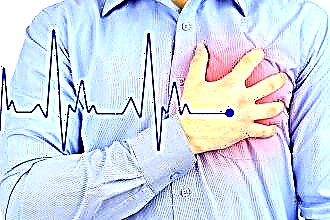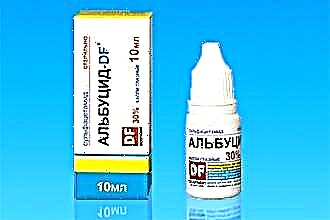Free swallowing without any obstacles is one of the prerequisites for fully enjoying food and appreciating its taste. Normally, the act of swallowing is not accompanied by painful sensations, it is performed automatically, unconsciously, and does not cause any inconvenience. If food gets stuck in the throat, and this does not happen figuratively and quite tangibly, the patient has serious reasons for concern. Violation of the act of swallowing by specialists is designated by the term "dysphagia" and is considered not as an independent disease, but as a symptom of various pathologies. What to do if the patient is worried about the presence of dysphagia? What treatments can alleviate his condition?
Etiology and classification of dysphagia
 It is impossible to find an effective and correct treatment without knowing what kind of disease the patient is facing. Since dysphagia is a symptom, it can be included in the list of signs of various nosological forms. A nosological form is understood as any specific disease that can be brought up for discussion as a full-fledged diagnosis, has a pathogenesis (development mechanism), a complex of symptoms. Dysphagia is usually divided according to the level of localization:
It is impossible to find an effective and correct treatment without knowing what kind of disease the patient is facing. Since dysphagia is a symptom, it can be included in the list of signs of various nosological forms. A nosological form is understood as any specific disease that can be brought up for discussion as a full-fledged diagnosis, has a pathogenesis (development mechanism), a complex of symptoms. Dysphagia is usually divided according to the level of localization:
- oropharyngeal dysphagia;
- esophageal dysphagia.
Among the causes of oropharyngeal, or high dysphagia, the leading ones are:
- Obstruction (enlargement of the thyroid gland, lymph nodes, Zenker's diverticulum, neoplasm).
- Neuromuscular disorders (lesions of the central nervous system, myasthenia gravis, Parkinson's disease).
- Incorrect placement of teeth in the dentition.
- Ulceration of the oral mucosa or insufficient moisture (xerostomia).
With esophageal, or lower dysphagia, it should be assumed that the patient has:
- GERD (gastroesophageal reflux disease);
- tumors of the esophagus;
- infectious esophagitis;
- chemical burn of the esophagus;
- esophageal stenosis;
- achalasia of the cardia;
- aortic aneurysms;
- foreign body obstruction;
- spastic dyskinesia, esophageal atony;
- sideropenia.
The feeling that food gets stuck in the throat, in the projection of the neck and behind the sternum is more characteristic of esophageal dysphagia.
With oropharyngeal dysphagia, patients are worried about the accumulation of food in the mouth, the inability to take a full sip, as well as the aspiration of food and the resulting cough and choking.
It is important to understand that it is not always possible to draw a clear boundary between the causes of oropharyngeal and esophageal dysphagia due to the combination of several pathologies in the same patient. There is also the concept of acute, chronic, persistent, intermittent (periodic) and progressive dysphagia. Swallowing disorder is sometimes caused by compression of the esophagus (for example, with goiter).
Stuck food in the tonsils can be explained by impaired swallowing due to pain and / or the presence of "pockets" on their surface, accompanied by bad breath and most often indicates the presence of a chronic inflammatory process - tonsillitis. At the same time, the gland (palatine tonsil) is inflamed, plugs are visualized in the lacunae.
The sensation of an "obstacle" in the path of the food bolus can be psychogenic (neurogenic anorexia, etc.), although in fact the pharynx and esophagus are patent. Sometimes food gets stuck in the throat in patients who are experiencing strong emotions.
Choice of treatment
The variety of reasons why food gets stuck in the throat does not allow us to talk about the only and at the same time effective way to help the patient. However, there is a certain algorithm according to which a treatment regimen is formed:
- Diet correction.
- Correction of eating habits.
- Conservative methods.
- Surgical intervention.
Diet correction is recommended for all patients, but it is most useful if food is in the throat due to GERD, esophageal ulcers, esophagitis, sideropenia (a consequence of iron deficiency in the body, iron deficiency anemia). The diet should be balanced according to individual needs, food is prepared by boiling, stewing, baking. Irritating foods, alcohol are excluded. The list of permitted and prohibited types of food corresponds to the diet menu No. 1 according to Pevzner.
Correction of eating habits is an important measure for eliminating dysphagia caused by hastily eating food on the go, in an uncomfortable position. You should also change the tactics of eating for patients with GERD. Recommended:
- eat no later than two hours before bedtime;
- avoid overeating, eat slowly, carefully;
- chew even soft food thoroughly;
- divide food into small pieces, drink liquid in small sips;
- eat food at a comfortable temperature;
- choose clothes that do not squeeze the stomach;
- do not go to bed for an hour and a half after eating;
- raise the head end of the bed by 15-20 cm;
- do not bend over for an hour after eating.
You should also quit smoking, drinking alcohol, make sure that the food does not contain irritating substances (hot spices). If the swallowing disorder is caused by pain and discomfort in the mouth due to dryness, ulceration, or tooth changes, it is important to find the underlying cause and start treating it.
Conservative treatment
 Conservative treatment includes taking medications and non-invasive (not violating the integrity of the skin and mucous membranes) procedures that are aimed at alleviating the patient's condition. Conservative methods include rinsing the throat, physiotherapy. Although conservative approaches are considered to be more gentle than surgical treatment, they are not always effective. In many cases, conservative therapy is combined with surgical treatment.
Conservative treatment includes taking medications and non-invasive (not violating the integrity of the skin and mucous membranes) procedures that are aimed at alleviating the patient's condition. Conservative methods include rinsing the throat, physiotherapy. Although conservative approaches are considered to be more gentle than surgical treatment, they are not always effective. In many cases, conservative therapy is combined with surgical treatment.
When food is stuck in the throat - what to do? The measures listed below can help if the patient is faced with a similar situation for the first time or if the food bolus is delayed due to the presence of an esophageal diverticulum:
- Drink a few sips of warm liquid.
- Change the position of the body.
- Try to enter air into the esophagus with an "empty" pharynx (aerophagia).
A patient who periodically or constantly has food stuck in his throat should have water, juice or other non-alcoholic liquid with him.
Such patients should not eat dry or solid food if there is nothing to wash it down with - even a small piece stuck during a throat causes considerable inconvenience, causes pain behind the breastbone.
All the techniques described in the list are effective for esophageal spasm, too much food swallowed. They do not help those patients who suffer from narrowing of the esophagus as a result of tumors, scarring, systemic scleroderma. If the patient is aware of a tendency to spasm of the esophagus, he should avoid physical exertion and simultaneous food intake, as well as emotional distress while eating. You can talk with your doctor about adding citric acid to your food, which improves swallowing reflexes.
Long-term conservative therapy is used to treat GERD, hiatal hernia, esophageal ulcer, chronic esophagitis and includes, in addition to recommendations regarding diet and eating habits, taking medications:
- proton pump inhibitors (Lansoprazole);
- antacids (Almagel);
- prokinetics (Motilium);
- H2 blockers (Famotidine);
- bismuth preparations (De-nol).
With achalasia of the cardia (up to stage III), diffuse esophageal spasm, a diet with a predominance of soft food, nitrates (Nitrosorbide), calcium channel blockers (Nifedipin), local anesthetics (Novocain, Anestezin), antispasmodics (Drotaverin, Dicetel), B vitamins , sedatives. In case of violations of the contractile activity of the esophagus (atony of the esophagus, spasms of various etiologies), physiotherapy (amplipulse therapy, circular shower) is also indicated.
Infectious esophagitis is an indication for the appointment of antibacterial, antifungal, antiviral therapy. With scleroderma and sideropenia, therapy of the underlying disease is necessary.
Surgery
Surgical intervention is used when the patient cannot be helped in a conservative way. If there are obstacles in the path of food passage (for example, a neoplasm), the food will stand in the lumen of the digestive tract, not getting into the underlying sections. In some patients, the inability to eat food in the usual way (through the mouth) leads to exhaustion, as they can only swallow a small amount of liquid food.
 Surgical treatment is indicated:
Surgical treatment is indicated:
- If there is a neoplasm.
- With achalasia, cardia stage III-IV.
- With a diverticulum that is poorly emptied or accompanied by complications.
- With esophageal stenosis, aortic aneurysm.
- With the ineffectiveness of conservative therapy for GERD.
Stuffing food in the throat due to a tumor cannot be stopped conservatively.
The neoplasm should be removed, but this is not always acceptable due to its size and anatomical location. Therefore, surgical treatment can be combined with conservative chemotherapy both before and after surgery. The possibility and effectiveness of surgical intervention is considered on a case-by-case basis.
There are many surgical options available. Achalasia of the cardia may be an indication for endoscopic balloon dilatation of the cardiac sphincter (stretching of the narrowed area), esophagocardiomyotomy, fundoplication (dissection of the muscular membranes in the area of the cardiac opening, stitching of the stomach to the diaphragm). Laparoscopic Nissen fundoplication is performed in patients with GERD.
Surgical methods also include gastrostomy, which is the creation of a canal in the abdominal cavity that allows the patient to be fed without going through the esophagus. This method is used when there is a high risk of aspiration (the entry of the contents of the digestive tract into the respiratory tract), as well as when it is impossible to eat well through the oropharynx (significant narrowing of the esophagus lumen). To date, the technique of percutaneous endoscopic gastrostomy has been developed, which is less traumatic compared to the classical approach.
Lumps of food getting stuck in the throat is not only an unpleasant situation, but also dangerous. If the episodes of getting stuck are repeated frequently, and the patient notes other symptoms (weakness, fever, weight loss, pain, etc.), you should immediately consult a doctor. The diagnosis and treatment of dysphagia is dealt with by an otolaryngologist (ENT doctor), as well as specialists in the field of abdominal surgery. An initial examination can be performed by a general practitioner.



